Microsoft Office 2016 Professional review
Office finally catches up with Google Docs. Well, sort of...
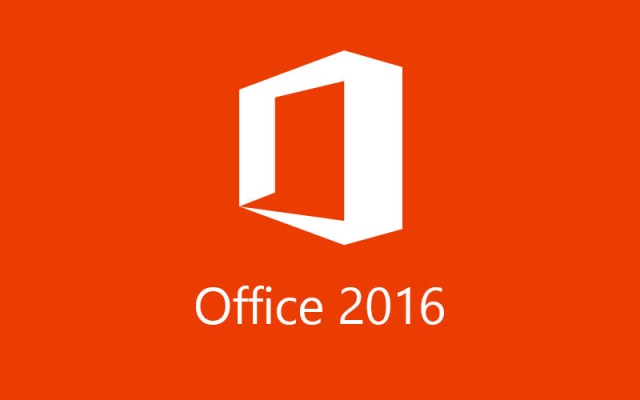

The latest update gives Office some much-needed support for live collaboration but otherwise changes relatively little
-
+
Adds long-awaited real-time collaboration features (in some parts of the suite at least); Retains consistent user experience
-
-
Most new features are only relevant to Office 365 users

Microsoft Office 2016 doesn't look very different to Office 2013, with its use of solid colours and Ribbon bars that are almost entirely unchanged. Instead, the focus is on incremental improvements that primarily focus on the ubiquitous office suite's cloud-based features. We're fans of Office 2013's interface, so it's certainly welcome to see that Microsoft hasn't tried to fix anything that isn't broken.
Office 365 users are getting the new versions first, with enterprise Volume Licence customers able to use the new software from the beginning of October. Standard perpetual licence versions should be coming later in the year. When they do finally come out, perpetual licence editions won't benefit from the same regular feature updates that VL and Office 365 customers get. It's currently not clear whether their online features work properly using the free Microsoft OneDrive cloud space that all Windows users are entitled to.
The core Office 2016 Business suite includes Word, Excel, Outlook, PowerPoint and Publisher and costs 7.00 per user, per month with an annual commitment. Office 365 Business Premium adds extra storage, Skype for Business and email capabilities at 7.80 per user, per month with an annual commitment. We're still waiting for Android and iOS Skype for Business apps to be fully released, although the apps have now entered a preview phase accessible to some corporate users.
The ProPlus edition comes in at 10.10 per user and includes Access. OneNote, which is available free to all Windows users, also integrates with Office 365, and Microsoft Visio and Project can be added as separate product subscriptions.
Some of Office 2016's new features span multiple apps, such as the background patterns and themes that users can apply to all the Office apps associated with their account. They can connect external services, too, from obvious options such as OneDrive and SharePoint, to Facebook and Twitter accounts.

Account themes and settings can be applied to all of your Office apps

Dark grey and white colour schemes are now available for those who eschew colour
Sign up today and you will receive a free copy of our Future Focus 2025 report - the leading guidance on AI, cybersecurity and other IT challenges as per 700+ senior executives
You can now search for the feature you want in all of the Office apps via the 'Tell me what you want to do' search box at the top of the Ribbon bar. All the Office apps also get access to Bing searches via its integrated smart lookup tool. We'd have liked the Tell me search to have a better grasp of natural language and Office's own features. For example, in Word, it didn't provide any useful suggestions when we asked it how to disable smart quotes - this compares badly to the massive flexibility and intelligence of Windows 10's built-in Cortana search features.
Word
Perhaps the most useful and exciting feature of the entire Office 2016 suite is that you can now collaborate on Word documents in real time. While Office 365 users have been able to share Word documents for a long time, it's not previously been possible for two people to work on the same document simultaneously. Attempting to do so sometimes resulted in multiple versions of the same file being saved in OneDrive storage.

A new Share button allows you to invite others to access your documents
The new sharing and co-authoring features mean that, as long as your Word document is saved to OneDrive, rather than a local directory, you'll be able to invite anyone to view or edit it. Your collaborators don't need Office 2016 or Office 365 subscriptions of their own to view or even edit the documents you share with them, just the free Word Online app. The first time you share a document with a guest editor, you can select to automatically share changes as they happen. Opt in to this and we strongly suggest that you do and you'll get a truly collaborative working environment that easily rivals Google Docs.
Word Online is itself a cut-down version of the desktop edition. The mobile, web, and Windows 10 Word Online apps share a common, consistent interface. The feature selection is very similar to that provided by Google's service, but the layout and interface are a slicker, albeit a little slower-loading.
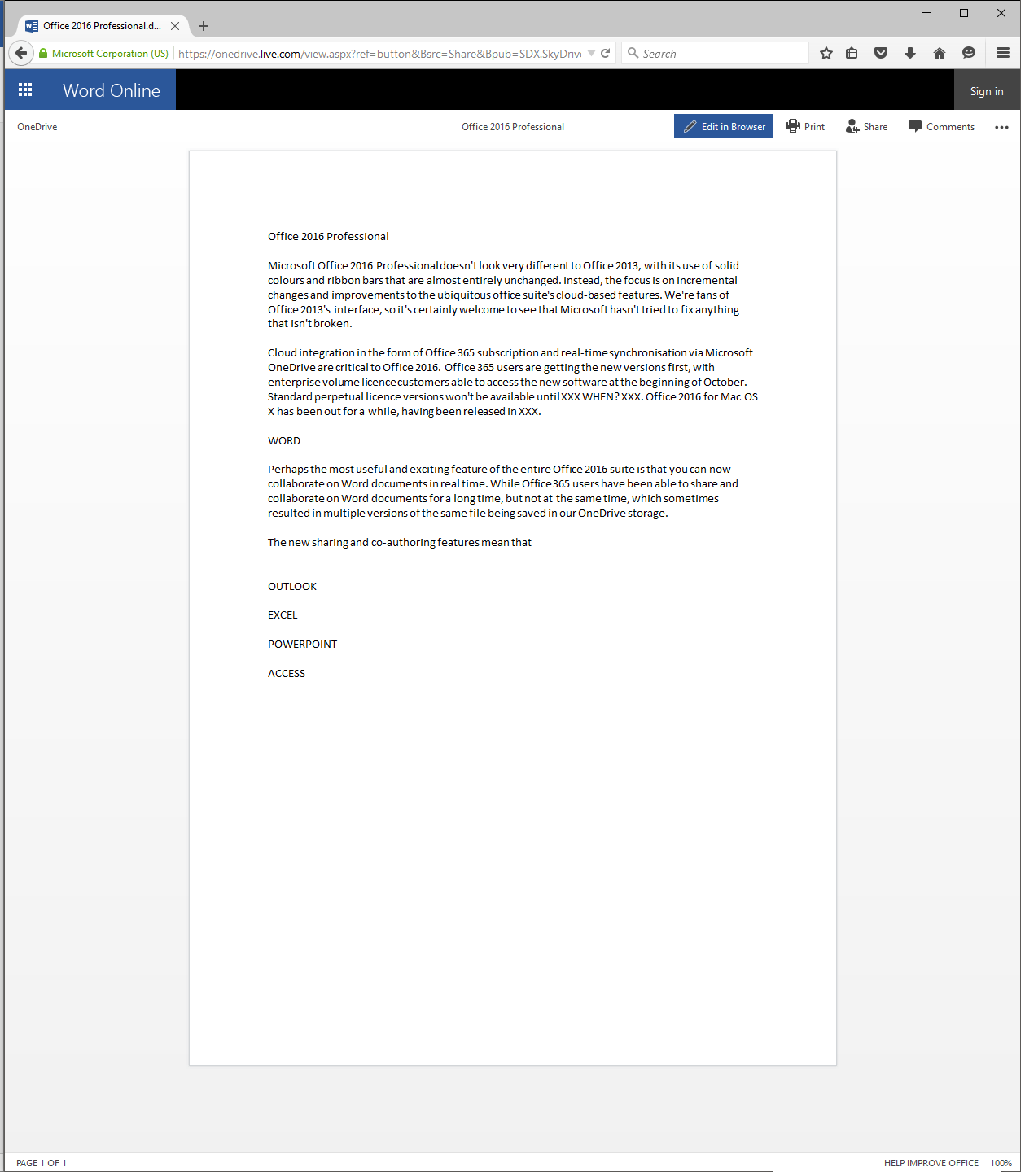
Users invited to collaborate will be able to edit files online even if they don't have their own Office 365 subscription
You get a range of text and page formatting options; it's easy to insert tables, images and symbols, and we're fans of Word Online's spelling checker and on-screen word count in a bar at the bottom of the page. It'll even show a count for a highlighted section of your document.
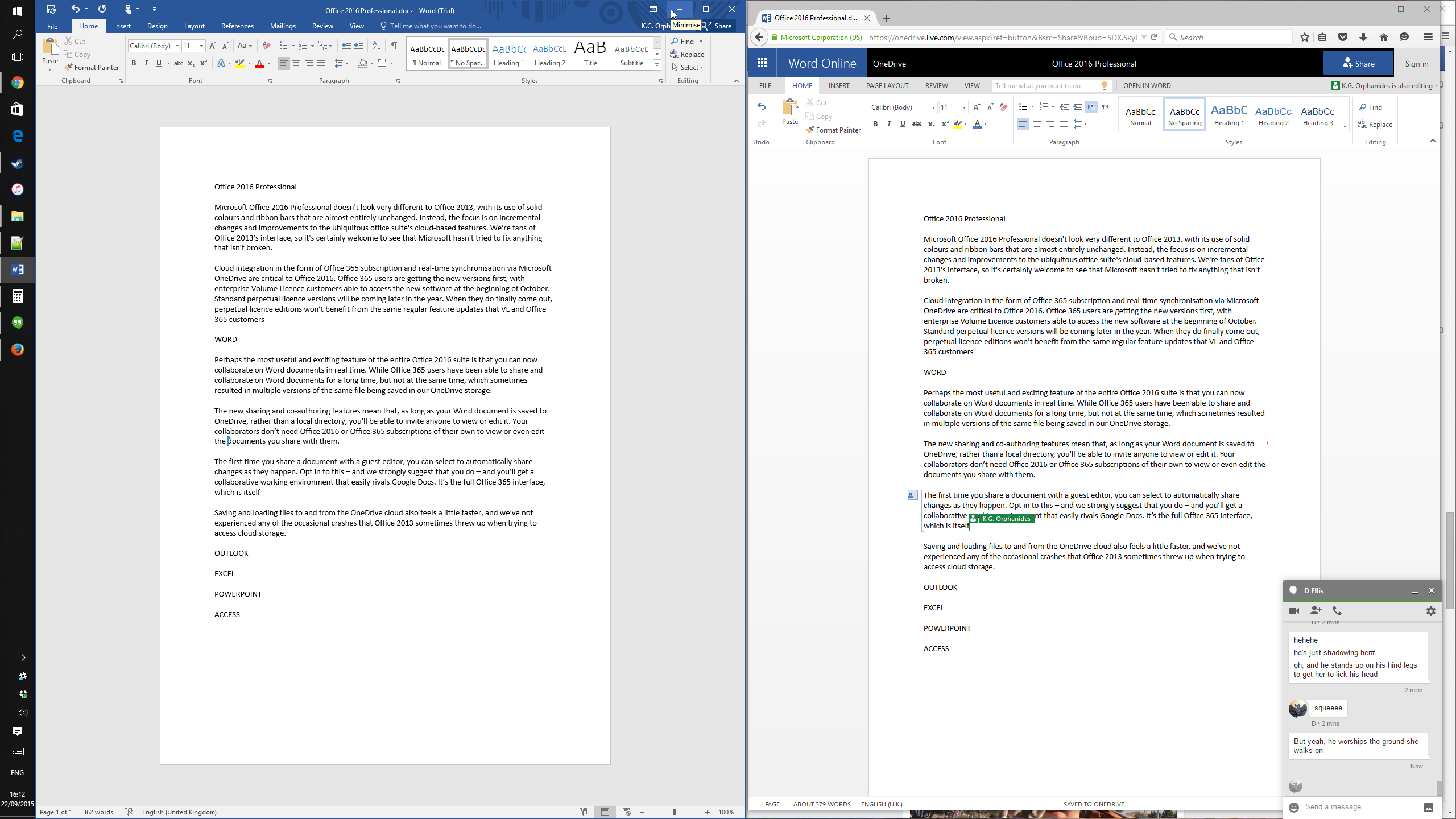
Side-by-side comparison of Word desktop and Word online editing interfaces
Simultaneous online editing isn't an entirely smooth and trouble-free experience however. We're not too keen on the way we had to manually move from view mode to edit mode when accessing a shared Word Online file. Saving and loading files from OneDrive using the desktop version of Word can be sluggish if your internet connection is slow. We also noticed that files open on the desktop occasionally lost sync with versions being edited online. Even so, these are relatively minor issues with what's become an outstanding online word processor that now capably spans the gap between desktop, web and mobile.
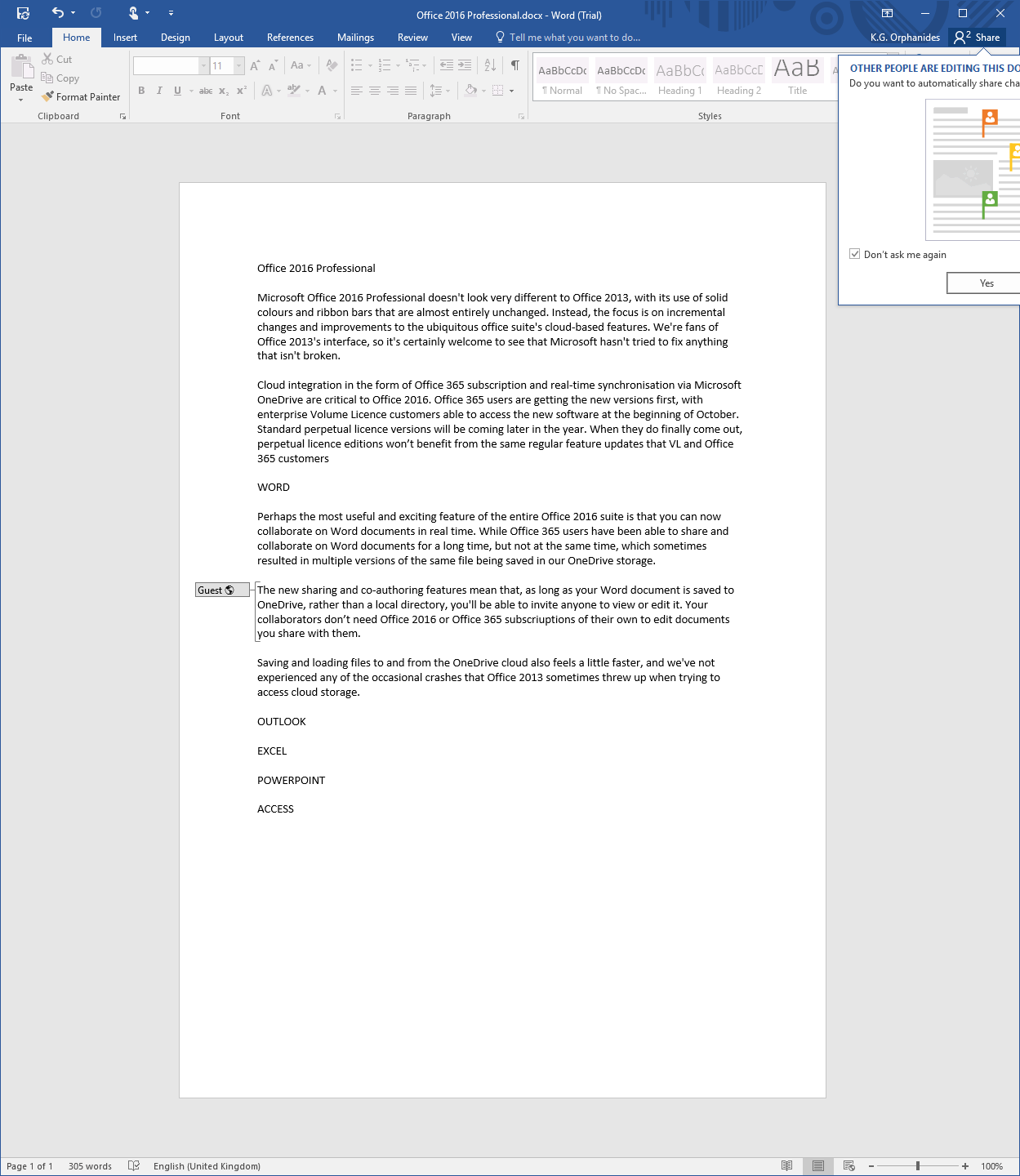
Word clearly shows you who's contibuting which changes to your shared documents
Word 2016 is quite simply the best word processor on the market. It's also the first desktop word processor to allow collaborative editing of shared online documents, giving you all the features of the desktop with the syncing of purely web-based rivals such as Google Docs.
Outlook
Like most of Office 2016, Outlook is little changed, which we appreciate, as sudden changes to your email client are rarely welcome. However, there are a few new options, most of which are there to provide better integration with Office 365's cloud-based sharing services. When you add file attachments from OneDrive or SharePoint to an email, you can choose whether recipients are allowed to only view them, or whether they can have edit permissions that'll allow them to collaborate online and change the shared document.
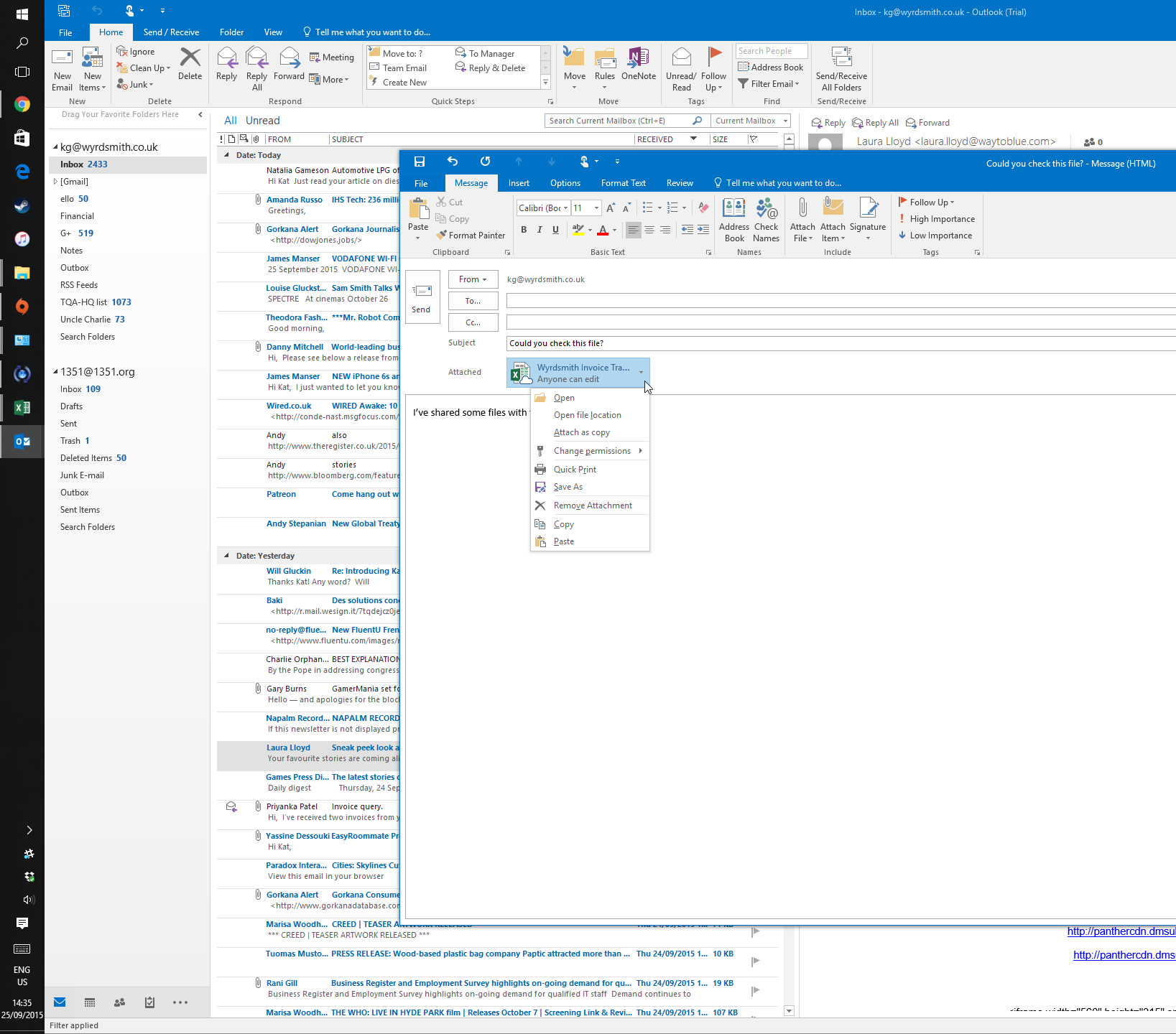
Outlook lets you set the sharing settings of OneDrive files as you send them
If your business has moved its email to Microsoft's Office 365 cloud, using either an OnMicrosoft domain or mapping your own domain to the service, then your users will have access to Outlook's Groups feature. This makes it easy to create shared, fully archived message histories between groups of colleagues working on shared projects, for example. Even newly added group members will get complete access to the message archive, making it easy to bring them up to speed on the conversation. Groups can also easily share file and calendars, and extra administration tools are available from Office 365's online admin centre.
Other improvements that Office 365 mail users get include extra inbox sorting in the form of the Clutter feature. This allows you to categorise email that's low-priority but not entirely unwanted as "clutter". Outlook will learn from your decisions over time and automatically file messages in the clutter folder so you can look at them at your leisure, without them getting in the way of more important items.
Excel
Excel is perhaps the component of Office that has the fewest rivals. Although there are a number of fairly capable spreadsheet packages around, with Google Sheets making for a lightweight web-based alternative and LibreOffice Calc standing up to heavier use, none comes close to the sheer range of features that Excel provides.
Excel's seen some of the most significant changes to any part of Office. Its standard functions and interface remain unchanged from Office 2013, so even your most complicated spreadsheets and macros will continue working. However, Excel 2016 has received some additions to its data importation and handling functions, which all ties in to Office 2016's more integrated, cloud connected update. The Data tab is now home to some functions previously only available through the Power Query add-in: you can now import data from a huge range of databases, both local and in the cloud.
Other new features include a number of extra charting and data visualisation options, including waterfall charts for tracking changes to values over a time, box and whisker plots to show statistical variation, and sunburst charts to illustrate hierarchical data.
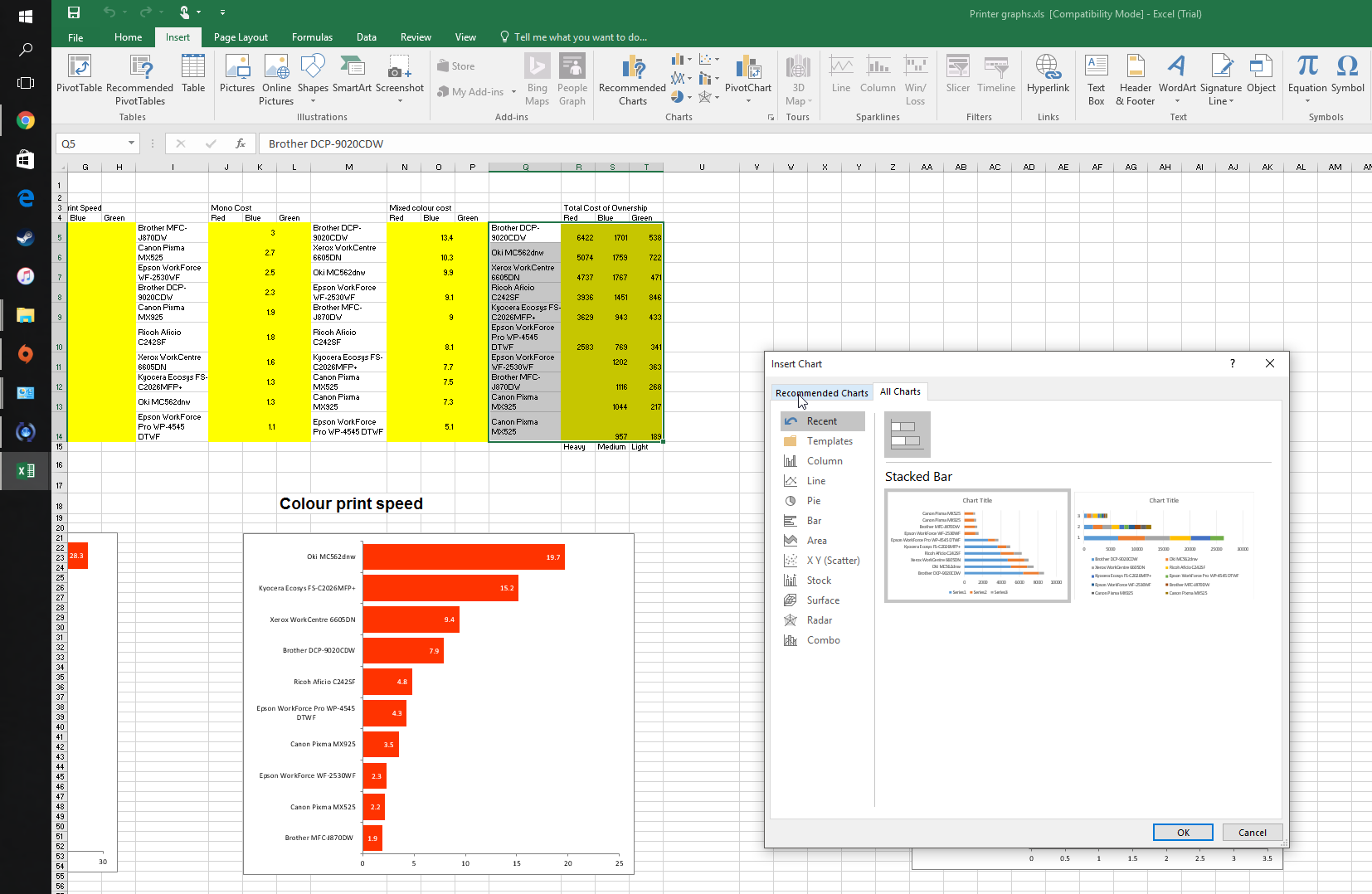
Excel has seen a few extra additions to its graphing options
For users that handle profit and loss, marketing, or sales data on a regular basis, the data forecasting options have been refined. There's now a one-click Forecast button under the Data tab, and rather than a simple linear forecast, exponential smoothing features have been added to even out inconsistencies caused by one-time data spikes in the past.
Pivot tables have seen some of their most significant updates since 2010, with automatic relationship detection and time grouping, as well as in-table editing for advanced features such as custom measures. Further incremental improvements include direct publishing to Microsoft's PowerBI visualisation platform, automatic rotation for inserted images, extra shape styles for charts and diagrams, touchscreen support with handwriting recognition for equations, and the same online integrations that the rest of Office has seen, with document sharing and built-in web searches.
However, there are a couple of improvements we were hoping for that haven't come with this release. For example, Excel still lacks a convenient method of exporting graphs and charts as high resolution images. Surprisingly, unlike Word 2016 and Google Sheets, two people can't work on the same spreadsheet in real time unless both are using the less-feature rich Excel Online to access it. You can give others editing rights over your documents via Office 365, but if you keep your workbook open in Excel on the desktop, they won't be able to edit it.
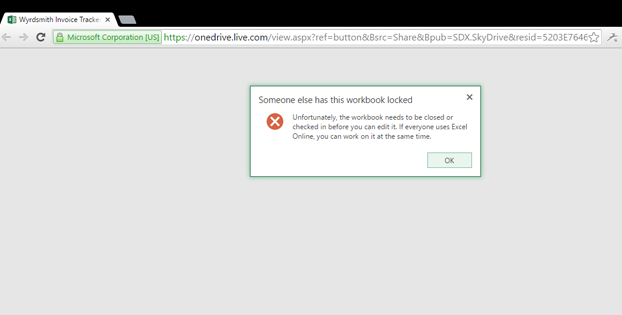
You can invite people to edit your Excel workbooks, but if you have it open in Excel, they won't be able to editing using Excel Online
PowerPoint, Publisher and Access
The standard Professional edition of Office is rounded out by more specialist apps that have seen fewer changes than Word and Excel. Microsoft Publisher has no listed changes at all, and hasn't even acquired the otherwise universal 'Tell me what you want to do' box. However, the simple layout and desktop publishing suite remains an underrated gem: it's very easy to use and allows anyone to quick put together simple newsletters, briefings and notices that require a little more formatting than Word is designed to handle.

Microsoft Publisher doesn't get any new features at all but is still an underrated gem
PowerPoint 2016's most important upgrade is support for co-authoring, which means that you and a colleague can work on the same presentation together in real time, as long as it's saved to your OneDrive cloud storage.
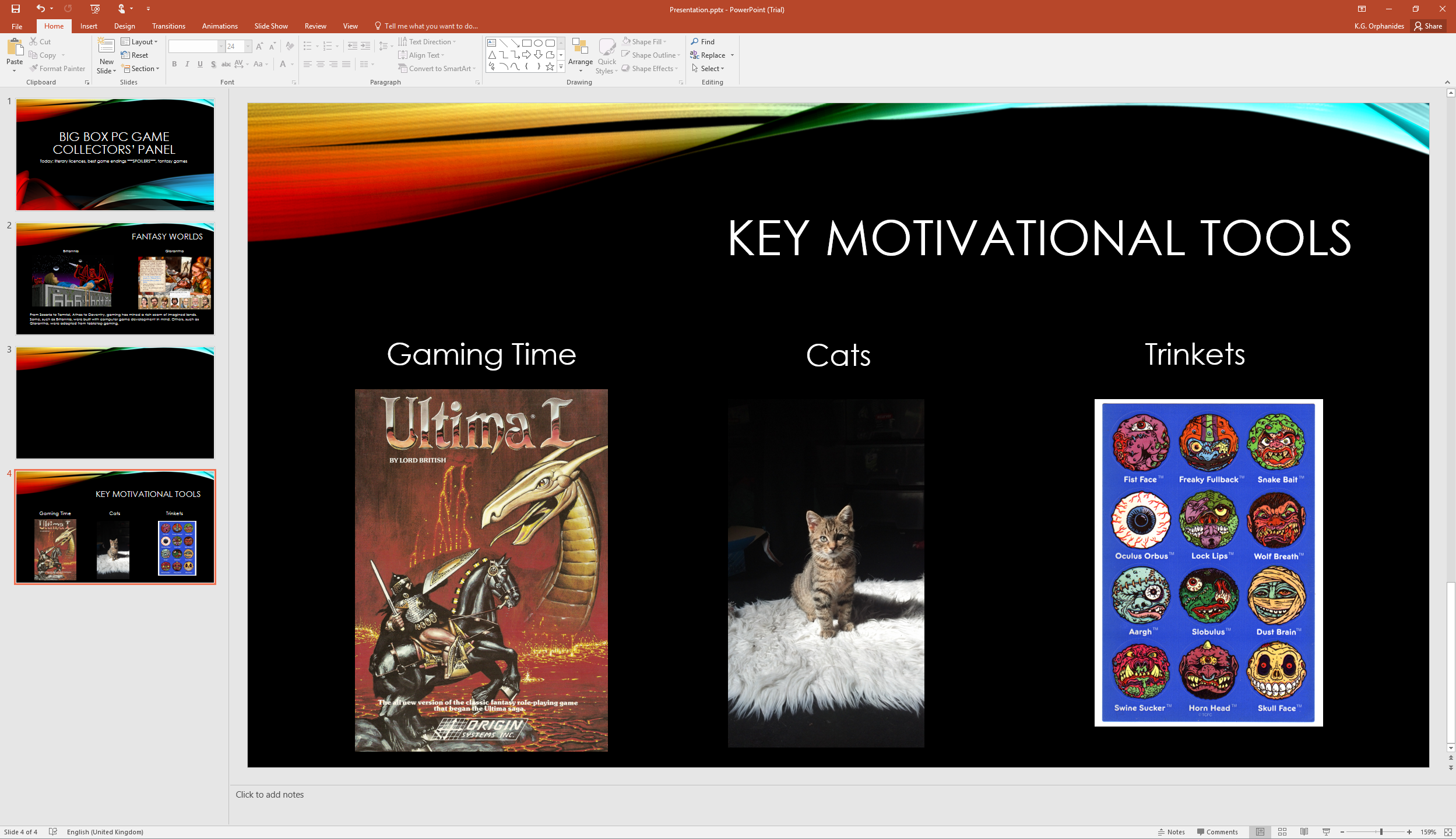
PowerPoint is little changed but gains real-time co-authoring features
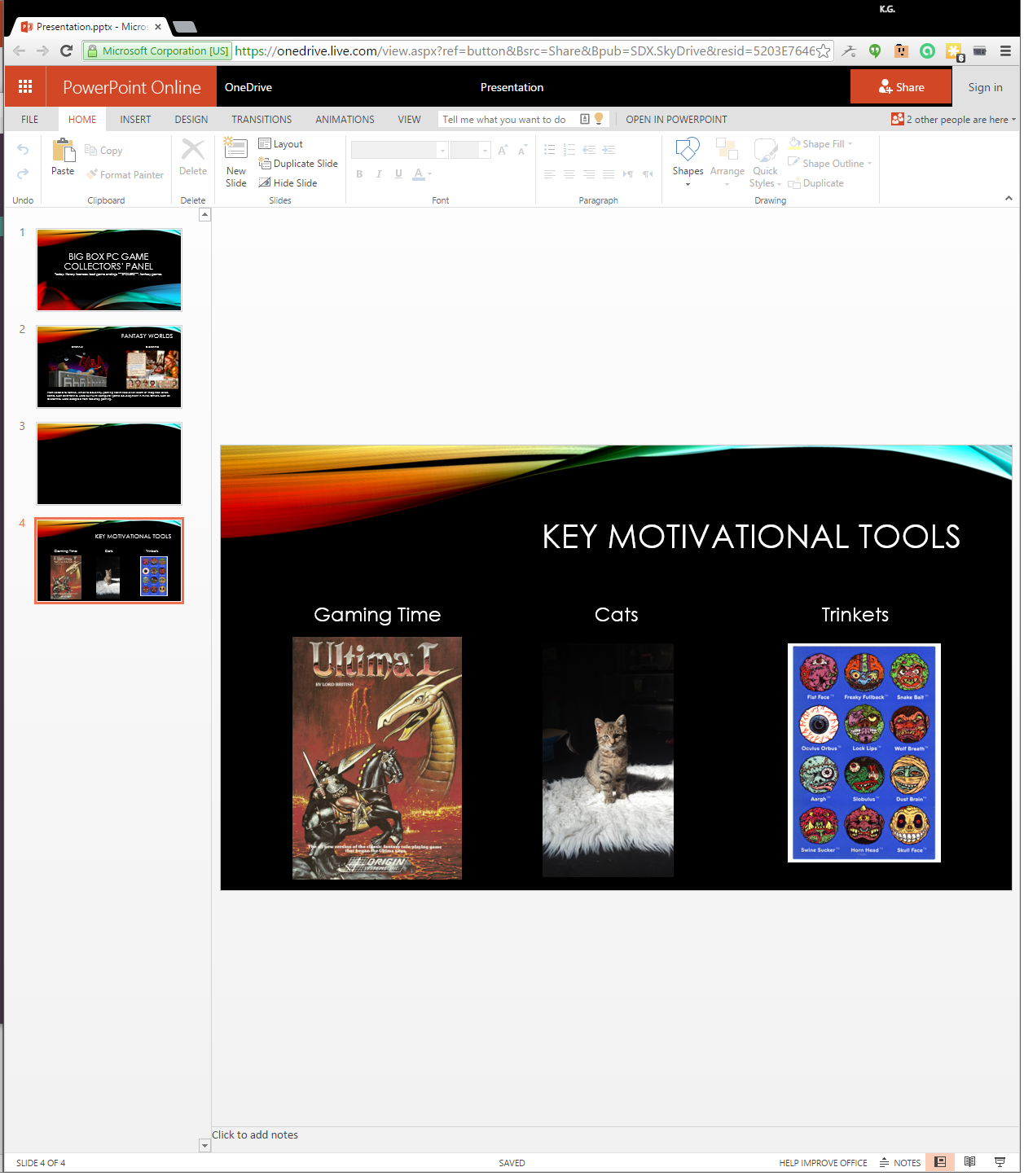
PowerPoint Online is almost as powerful as the desktop edition
Access might not be the most fashionable database development tool around, but Microsoft's been working hard to keep it relevant, with web app support and integration with SharePoint 2016, although that product is currently in public beta. The latest version of Access also introduces new templates to make it easier to organise your data. There are template options for creating web-based apps as well as local databases, and both options include plenty of tutorials and video guides to help users who are new to database development.
Conclusions
It's inevitable that most businesses will be upgrading to Office 2016 sooner or later, with many likely to be planning an upgrade almost immediately. The good news is that this latest version is great. Nothing's been broken and the new features add value, particularly for enterprises that use Office 365 as a cornerstone of their software ecosystem. Extra support for sharing and collaborative working mean that Office now feels like software that works as part of cloud-based system, very much improving on the previously awkward experience of trying to work online with colleagues using a combination of Office 2013 and Office Mobile.
Unfortunately, it's not perfect when it comes working together online. You only get proper real-time collaboration and co-authoring in Word and PowerPoint. We really hoped that Excel would support full live co-authoring, too. While we can see that it might not be appropriate for multiple people to work on a very complex workbook together, we'd have appreciated the option for simultaneous desktop access to simpler files, such as shared lists and price indexes.
Office 2016 is very much part of coordinated move towards a Software as a Service model for Office, and it remains to be seen how Microsoft will handle perpetual license versions. For those who don't work in the (Microsoft) cloud or have any use for Office 365, there's not really much to set the new edition apart from Office 2013. If that describes your business, then you might as well stick with Office 2013 for the moment.
Verdict
The latest update gives Office some much-needed support for live collaboration but otherwise changes relatively little
K.G. is a journalist, technical writer, developer and software preservationist. Alongside the accumulated experience of over 20 years spent working with Linux and other free/libre/open source software, their areas of special interest include IT security, anti-malware and antivirus, VPNs, identity and password management, SaaS infrastructure and its alternatives.
You can get in touch with K.G. via email at reviews@kgorphanides.com.
-
 Google is scrapping its dark web report feature — here's everything you need to know and some alternative options
Google is scrapping its dark web report feature — here's everything you need to know and some alternative optionsNews Google said while the dark web report feature offered “general information”, the tool didn’t provide “helpful next steps” for users potentially impacted by a breach.
By Emma Woollacott Published
-
 AI doesn’t mean your developers are obsolete — if anything you’re probably going to need bigger teams
AI doesn’t mean your developers are obsolete — if anything you’re probably going to need bigger teamsAnalysis Software developers may be forgiven for worrying about their jobs in 2025, but the end result of AI adoption will probably be larger teams, not an onslaught of job cuts.
By Ross Kelly Published
-
 JetBrains is mothballing its Fleet IDE service — here’s what developers need to know
JetBrains is mothballing its Fleet IDE service — here’s what developers need to knowNews The Fleet IDE platform will be discontinued later this month and updates will stop
By Ross Kelly Published
